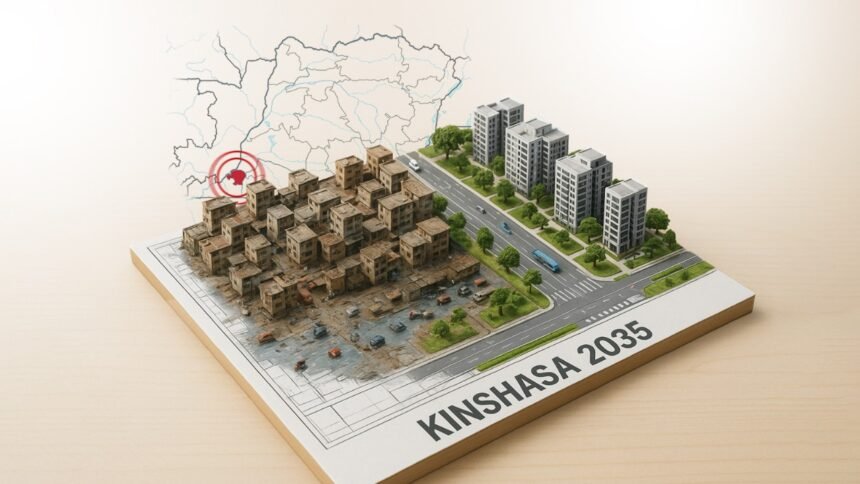Kinshasa has always been a city of contrasts — a sprawling, bustling capital of over 17 million where music and chaos coexist, where gleaming office towers stand next to crumbling neighborhoods. But in a rare burst of urban ambition, the Congolese government this week unveiled plans for a massive infrastructure renewal program meant to turn Kinshasa into a regional hub by 2035.
The project is nothing short of audacious. The blueprint, backed by a mix of state funds, Chinese investment, and financing from multilateral lenders, promises new highways, mass transit systems, green corridors, and large-scale housing developments. If implemented even halfway as planned, Kinshasa could emerge from decades of haphazard growth into a city with functional transport, proper waste management, and livable neighborhoods — a far cry from today’s chronic gridlock and sprawling slums.
At the heart of the plan is mobility. Kinshasa’s roads are notorious: narrow, pothole-ridden, and clogged with a constant flow of cars, motorbikes, and street vendors. The government has pledged to rehabilitate 200 kilometers of primary roads, construct ring roads to divert freight traffic, and introduce the city’s first modern bus rapid transit (BRT) network. Planners hope this will reduce the daily ordeal for commuters who currently spend hours trapped in traffic jams, often without access to affordable or reliable public transport.
But transportation is only the first layer. The plan also envisions major investments in drainage and flood prevention — a critical need given the city’s history of deadly floods, which have displaced thousands in recent years. There is a promise to expand water and power coverage, aiming to reach 80 percent of Kinshasa’s population by 2030. And in a nod to sustainability, officials are talking about tree-planting campaigns and urban green spaces to cool down the city and combat air pollution.
The scale of ambition, though, raises questions. Infrastructure development in the Democratic Republic of Congo has long been plagued by corruption, mismanagement, and delays. Grand announcements have come and gone before, leaving residents cynical. This time, the government insists things will be different, pointing to ongoing reforms in public procurement and partnerships with international lenders, which come with stricter transparency requirements.
Observers say the involvement of external financiers may indeed be the key to ensuring delivery. China, for example, is expected to provide engineering and construction support under a “resources for infrastructure” deal that swaps copper and cobalt access for urban development projects. Multilateral banks are tying their loans to performance benchmarks, meaning funds will be released in stages only if progress is verified.
Still, challenges loom large. Land rights disputes could derail housing projects, as many neighborhoods sit on informally occupied plots. Relocation of entire communities will be politically sensitive and expensive. There is also the risk that elite interests capture the benefits, turning shiny new roads into private driveways for the wealthy while the majority remain underserved.
Yet even skeptics admit Kinshasa has reached a breaking point. Population growth shows no sign of slowing, and without serious investment, the city risks becoming ungovernable. Congolese urban planner Didier Kalonji says, “We can’t keep adding millions of people to Kinshasa without water, electricity, or roads. This is not optional anymore — it’s survival.”
The stakes go beyond Kinshasa itself. The city is the beating heart of Congo’s economy and its political nerve center. A functioning capital could attract investors, boost productivity, and even improve governance by bringing state services closer to citizens. A failing one could drag the entire country into deeper instability.
For now, Kinshasa is buzzing with cautious hope. Construction has already begun on some arterial roads, and the government promises visible progress within a year. The next five years will test whether this mega makeover can stay on track, overcome vested interests, and genuinely improve the daily lives of millions. If it succeeds, Kinshasa might just leapfrog its reputation as one of the world’s toughest megacities and become a model for African urban renewal. If it fails, it risks becoming another cautionary tale of big dreams lost in bureaucratic quicksand.
One thing is certain: Kinshasa’s future is being drawn right now — in asphalt, concrete, and political will.










